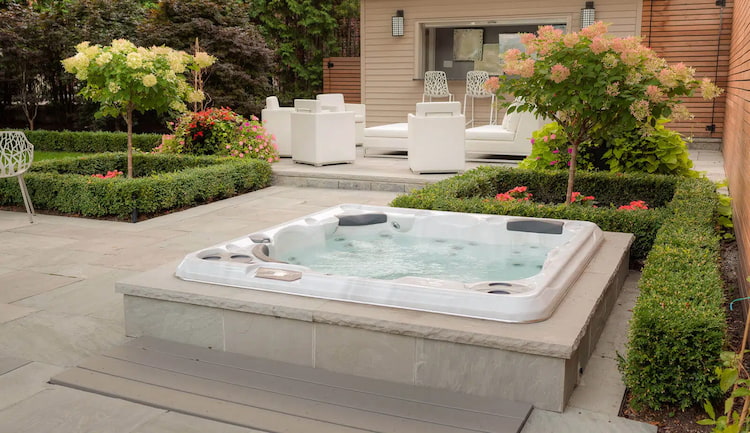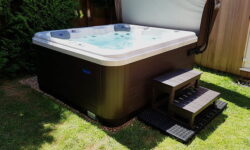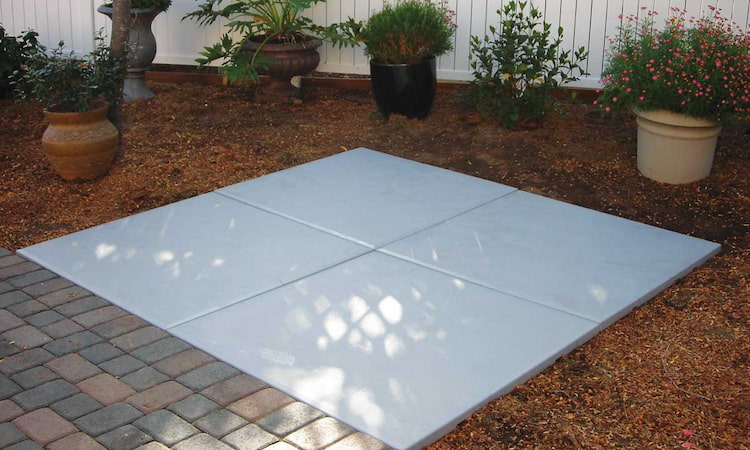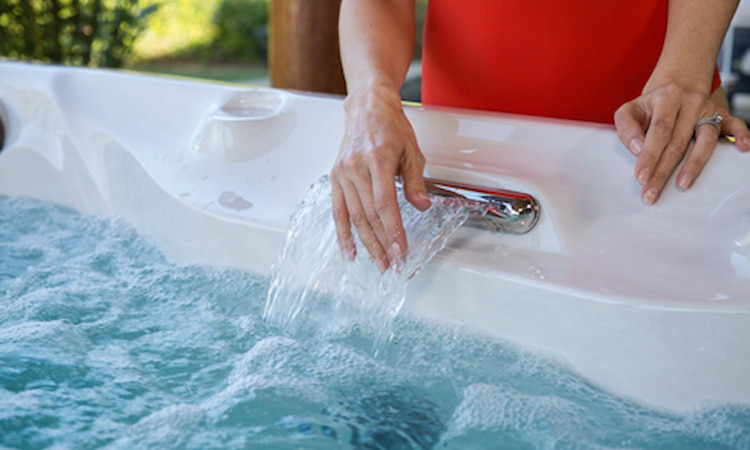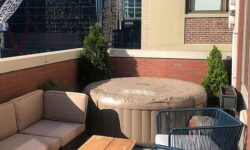You’ve got your hot tub and you’re ready to relax, but hold on! Have you considered safety measures yet? Do you need a fence around your hot tub?
Yes, you may need a fence around a hot tub for safety purposes. A fence can prevent accidents, especially if there are children or pets in your home, by restricting unsupervised access. It can also provide privacy when you are using the hot tub. Additionally, in some jurisdictions, local codes or laws require fencing around outdoor pools or hot tubs.
We’re here to help you navigate this, explore your options, weigh the pros and cons, and choose the right fence if needed. Let’s keep your hot tub times secure and enjoyable!
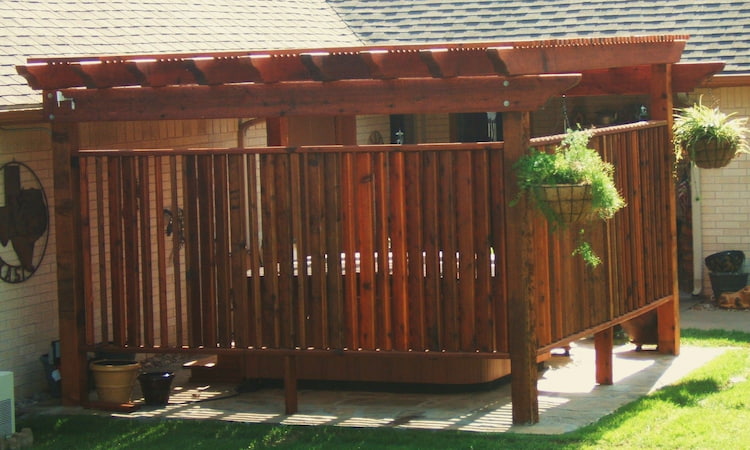
Quick Navigation
Understanding the Importance of Safety Measures for Hot Tubs
Installing a fence around your hot tub is not just about complying with local codes and regulations, it’s about creating a safe environment for you and your loved ones. A key measure to consider is installing a fence around your hot tub.
A fence serves multiple purposes. First, it prevents uninvited guests or pets from accidentally falling into the hot tub. It also provides privacy, especially if your hot tub is outdoors.
When choosing a fence, consider its height and the material. The fence should be high enough to prevent children from climbing over, and sturdy enough to resist impact.
Another important measure is a lockable hot tub cover. This prevents unsupervised access, especially by children. It also helps maintain the water temperature, reducing energy costs in the long run.
Analyzing the Legal Requirements for Fencing Hot Tubs
You’re keen on ensuring safety, and it’s equally important to be aware of the legal requirements for fencing your hot tub. Each municipality has different rules, and it’s crucial that you check with your local building department or homeowner’s association before installing a fence.
The following is a general, yet detailed overview of common legal requirements for hot tub fencing:
- Minimum Height: Most laws require fences to be at least 4 feet high to prevent children from climbing over.
- Gate Latches: Gates should be self-closing and self-latching, with latches placed high enough to be out of reach of children.
- Spacing Between Slats: To prevent children from squeezing through, the space between slats usually shouldn’t exceed 4 inches.
- Non-Climbable: Fences should be designed in such a way that they don’t provide easy footholds or handholds for climbing.
Exploring Various Fence Options for Your Hot Tub
While you’ve been considering the legal requirements, let’s not forget to explore the various fence options that you can choose for your hot tub.
First, there’s the traditional wooden fence. It’s a popular choice due to its natural look and the privacy it offers. You can choose from a variety of styles and finishes but remember to treat it regularly to prevent rot and warping from the steam and splashes.
Next, consider vinyl fencing. It’s durable, maintenance-free, and resistant to water damage. It’s also available in a variety of designs, so you’re sure to find one that suits your aesthetic.
For a more modern look, glass fencing might be your best bet. It’s sleek and provides a clear view of your surroundings, but keep in mind that it doesn’t offer much in terms of privacy.

Metal fencing can be a good option if you’re looking for strength and durability. However, it can be more expensive and may require more upkeep to prevent rust.
Ultimately, the best fence for your hot tub depends on your personal preferences, budget, and local regulations. Be sure to consider all these factors before making your decision.
Weighing the Pros and Cons of Hot Tub Fencing
In light of your aesthetic preferences and financial considerations, it’s crucial to weigh the pros and cons of having a fence around your hot tub.
| Pros | Cons |
|---|---|
| Sense of privacy | Costly |
| Security measure | Maintenance |
| Aesthetic appeal of your space | View limitations |
| Safety barrier |
On the positive side:
- A fence can provide a sense of privacy, allowing you to relax and enjoy your hot tub without feeling watched.
- It can act as a security measure, preventing unauthorized access to your hot tub when you’re not around.
- A well-chosen fence can enhance the aesthetic appeal of your outdoor space, adding value to your property.
- It can also serve as a safety barrier, especially if you have young children or pets, keeping them safe from potential accidents.
However, there are also some drawbacks to consider:
- Installing a fence can be costly. Depending on the material and design you choose, the cost can quickly add up.
- Maintenance can be another concern. Some fencing materials require regular upkeep to prevent decay and wear.
- It can limit your view. If you enjoy looking out on your garden or the surrounding scenery as you soak, a fence may obstruct this.
Always consider your unique situation and needs when deciding on a hot tub fence.
Tips for Choosing the Right Fence for Your Hot Tub
First, consider your privacy needs. You’ll want a fence that’s high enough to provide privacy, but not so high that it blocks out sunlight or your view.
Next, think about the material. Wood is a popular choice, but it requires maintenance. Vinyl or metal might be better options for you.
Lastly, don’t forget about safety. Your fence should have a secure gate to prevent children from accessing the hot tub unsupervised.
Here’s a handy table for you:
| Consideration | Recommendation |
|---|---|
| Privacy | Choose a fence high enough to provide privacy but not block out sunlight or view |
| Material | Consider wood, vinyl, or metal depending on maintenance preference |
| Safety | Ensure your fence has a secure gate to prevent unsupervised access |
Frequently Asked Questions
On average, you’ll likely pay between $1,500 to $3,000 to fence your outdoor space. However, costs can vary widely, depending on the materials you choose and the size of the area you’re fencing.
You should inspect your hot tub fence regularly, at least twice a year. Depending on the material, you’ll likely need to replace it every 15-20 years. However, harsh weather can necessitate more frequent replacements.
Absolutely, you can install a fence around your hot tub yourself. However, if you’re not handy or familiar with local safety regulations, it’s safer and more efficient to hire a professional.
You should avoid materials that aren’t weather-resistant or heat-tolerant. Metals can get too hot, while certain woods might warp. It’s crucial to choose materials that can withstand your hot tub’s environment.
If you’re not installing a fence, consider using a sturdy, lockable hot tub cover. It’s vital to keep it locked when not in use. Also, installing an alarm system can further enhance your hot tub’s safety.
Conclusion
In conclusion, safety should be your top priority when installing a hot tub. While not always legally required, a fence can provide added security and privacy.
Consider your options carefully, weighing the pros and cons of each. Remember, the right fence not only enhances your hot tub experience but also keeps your loved ones safe.

